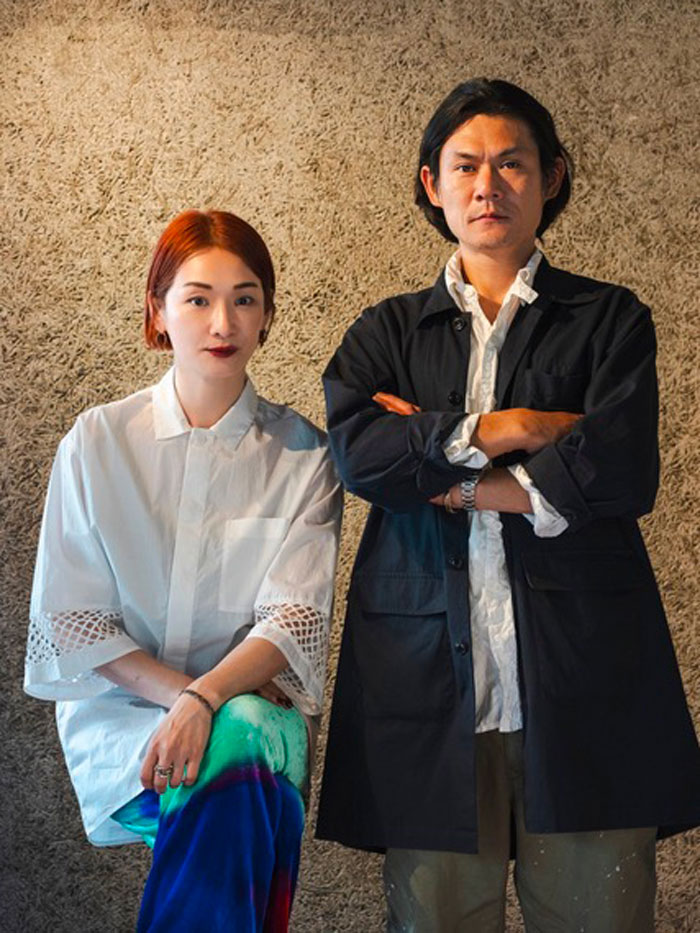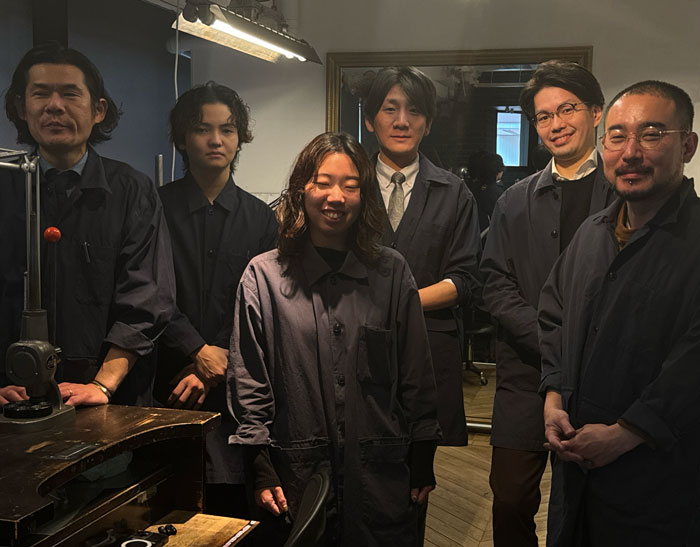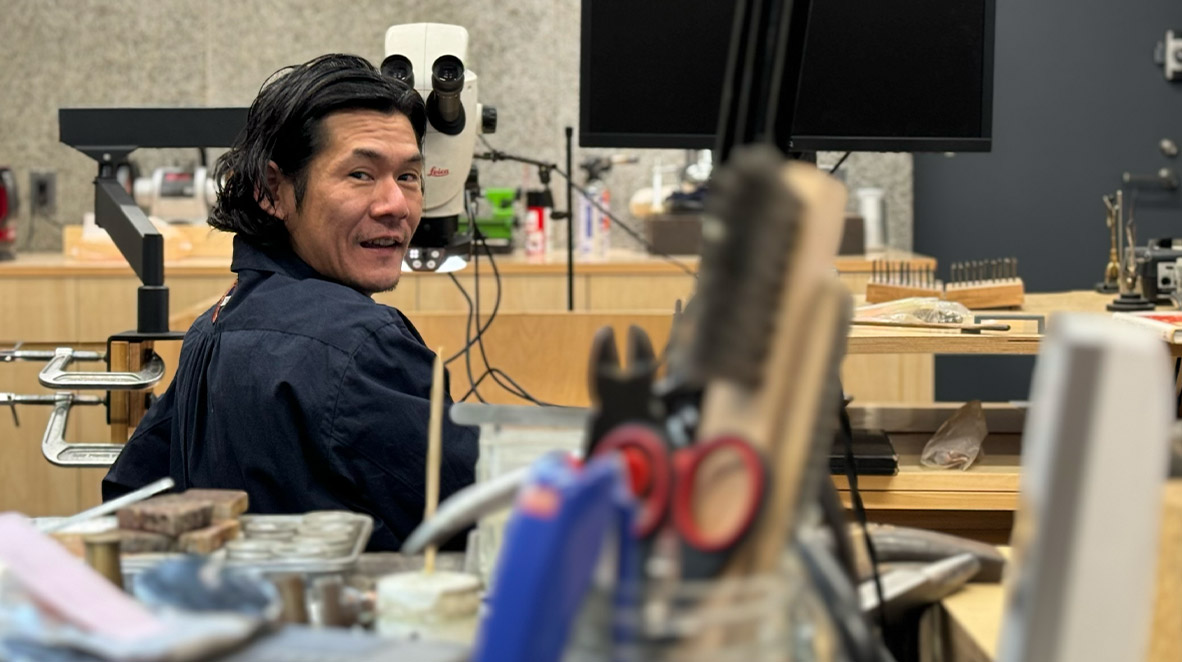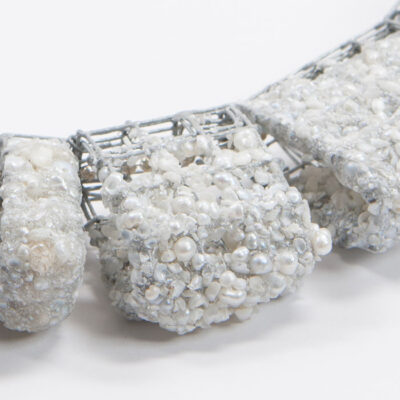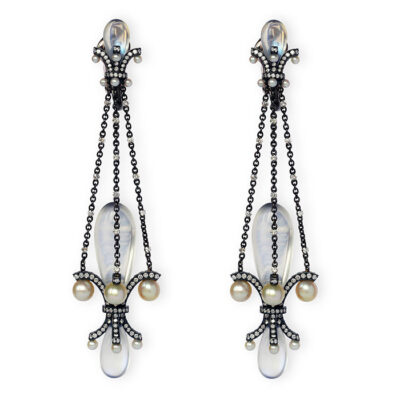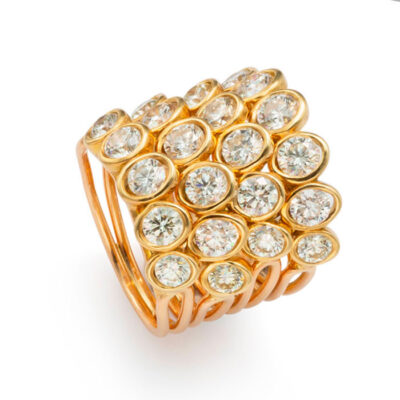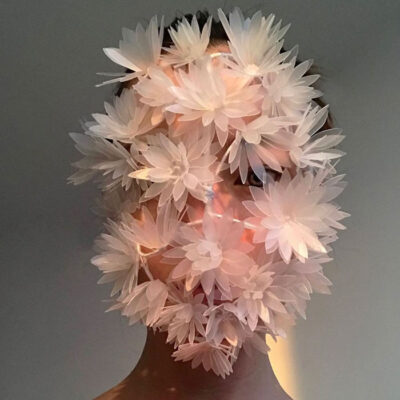Style
28 May 2024
Share
In Tokyo with Tomohiro Sadakiyo from the Hum brand
During my last visit to Tokyo, I met Tomohiro Sadakiyo, one of the co-founders of Hum. But what exactly is Japanese about this brand? It’s not so much the shapes or motifs as the metal techniques and philosophy.
By Sandrine Merle.
We made our way to Hum’s boutique and workshop by stopping at Harajuku station in the heart of the capital. One of the two founders, Tomohiro Sadakiyo, who makes the jewelry, was there to welcome me, as Yuka Iinuma, the designer, was held up in Kyoto. The two met at the Tokyo School of Jewelry and launched Hum in 2005. Tomo first showed me around the workshops where his craftsmen work. On the day of my visit, I met some of the team: Tomohiro, Hiroshi, Natuski, Satoshi… Then we headed to the uncluttered boutique, with its bare concrete floor and wooden display cabinets, and a huge bay window overlooking rows of workbenches.
European inspiration
The Japanese inspirations are not immediately apparent in the brand’s jewelry. The shapes do not evoke the inro (a box attached to men’s kimono belts) or kanzashi (hairpins). Nor are there any chrysanthemum or cherry blossom motifs. The collections feature Western forms such as wedding rings, link bracelets, solitaires, neo signet rings formed by an antique coin, and so on. In fact, the stylistic references are predominantly European. The Lace collection is inspired by the Guirlande style of early twentieth-century France, with its arabesques, bows and gold and diamond lace. The coins date back 2,000 years and the granulation is a tribute to the Etruscan style. The Art Deco reference for the chains with their (admittedly geometric) links is less obvious to the European eye… These types of jewelry (necklaces, earrings, etc.) have never existed in Japan: the country didn’t start making them until the late 19th century, when it opened up to the West. And they were intended only for export.
The Japanese touch
The Japanese aspect of Hum lies rather in the work on metal colors and textures. In a single piece, yellow gold is mixed with platinum or silver, sometimes oxidized to black. This work immediately reminded me of shakudo, the magnificent dark copper alloy inlaid with gold traditionally used for swords. When the samurai disappeared at the end of the 19th century, the craftsmen applied their know-how to jewelry destined for Europe. Tomohiro Sadakiyo is a worthy heir: Hum’s jewelry is meticulously chased, hammered and engraved. Stones are never held in place by aggressive claws, but set in mille-grain settings, i.e. with nano-beads of precious metal. Everything is of infinite delicacy. The Japanese and Europeans don’t work with metal in the same way. To demonstrate, he starts engraving, pulling his otafuku (hammer) backwards, unlike French jewelers who push it forwards. “The Japanese jeweler creates shorter grooves, which results in greater brilliance,” says Tomo, who with Yuka Iinuma opened a jewelry school in 2019 to pass on his skills.
Idealizing nature
Historically, hairpins, combs and inros were made of tortoise shell, lacquered wood and horn, all non-precious materials. And over the centuries, Japanese culture has remained relatively impervious to the statuesque, imposing, highly-stacked jewelry as we know it in Europe. Hum is part of the first generation of Japanese brands to really use precious stones. But in the kingdom of miniature and modesty, there’s no question of using sparkling, multi-carat specimens. The diamonds selected are those traditionally destined for industry, and the preferred cut is the rose cut, i.e. irregularly faceted, with a more subtle brilliance…” As in Japanese gardens, we seek to idealize nature by limiting artifice, rather than imposing order on it, as in a French garden”, concludes Tomohiro Sadakiyo.
Banner image: Tomohiro Sadakiyo © Sandrine Merle for The French Jewelry Post


